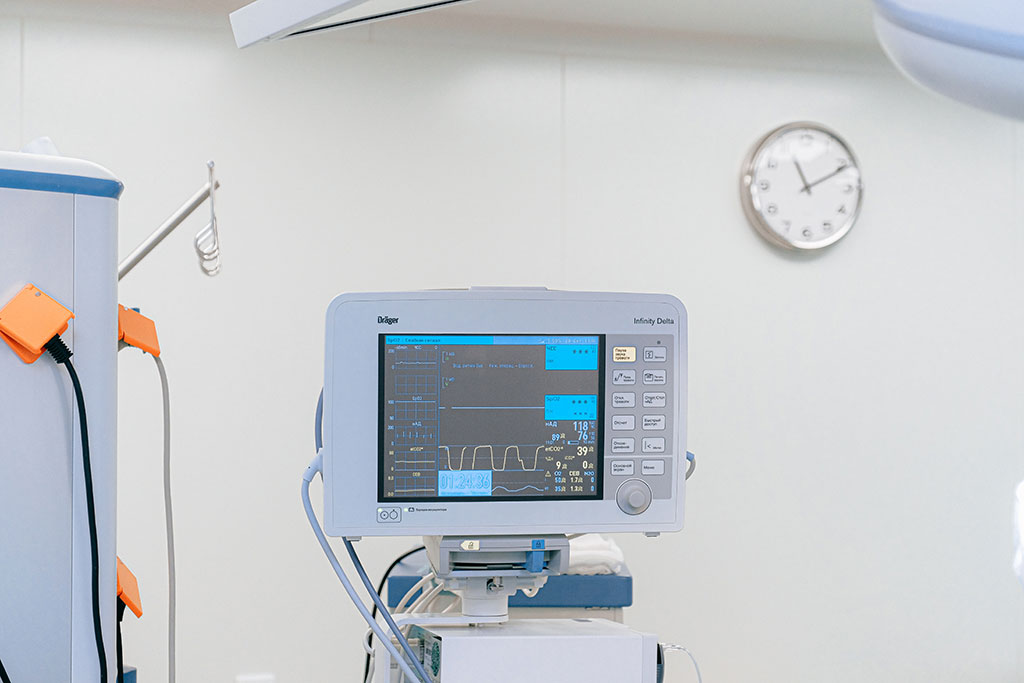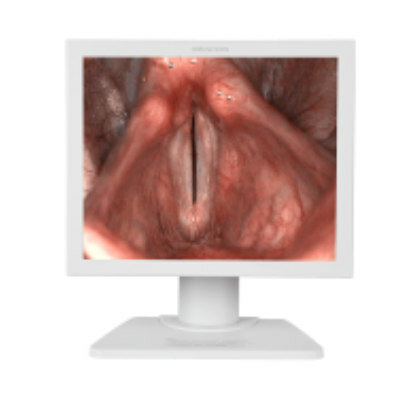Global Mechanical Ventilator Market to Surpass USD 11.5 Billion by 2027 Due to Increasing ICU Admissions
|
By HospiMedica International staff writers Posted on 19 Apr 2022 |

The global mechanical ventilator market is expected to register a CAGR of 12.7% during the period 2021-2027 to reach USD 11.7 billion by 2027, driven by an increase in the prevalence of chronic respiratory diseases such as lung cancer, chronic obstructive pulmonary disease (COPD), asthma, bronchitis, and other lung disorders, as well as rise in the number of hospitals and diagnostic centers. The increasing population of aged individuals who are susceptible to respiratory disorders along with technological advancements in mechanical ventilation will further fuel market growth. However, the high costs associated with mechanical ventilators and the risk of ventilator-associated diseases such as nosocomial pneumonias are expected to restrict market growth during the forecast period.
These are the latest findings of Research and Markets (Dublin, Ireland), a market research firm.
Mechanical ventilator is a device used to support the breathing of patients who are critically ill and unable to breathe on their own. A hollow tube, which acts as an artificial airway, is inserted into the patient's mouth and down into the trachea to connect the patient to the ventilator. In addition, mechanical ventilators are used to assess static compliance of airway resistance and respiratory system abnormalities as a diagnostic tool. The mechanical ventilator is a life-saving device in medical emergencies and surgeries and is majorly used for patients with spinal cord injury, stroke, respiratory disorders, or other disorders.
Purchasing a fleet of ventilators is a major decision for hospitals. The cost of acquiring new equipment is part of that decision-making process. Several ventilator options are available to care for a variety of patient needs such as home care ventilators, transport ventilators, low, medium, and high-acuity ventilators, high-frequency ventilators, non-invasive positive pressure ventilation/continuous positive airway pressure (NPPV/CPAP), bi-level positive airway pressure (BIPAP) systems. Different ventilators also have different gas delivery designs, including turbine-based air supply and proportional solenoid (PSOL) valve control, or a combination of the two systems. The costs for these ventilators can range from USD 5,000 to USD 50,000. Premium or high-acuity ventilators which are most commonly found in hospital ICUs typically have a PSOL gas delivery design and can currently cost between USD 25,000 and USD 50,000.
The number of innovations in intensive care unit (ICU) ventilation has been soaring. Potential optimization of ventilation bundles begins by re-investigating the critical constituents of respiratory mechanics. Automation of ventilation settings could result in a solution. Closed-loop systems have been categorized into clear, physiological signal-based and explicit computerized protocols or ECP. ECP systems utilize numerous inputs to curb one or numerous ventilator outputs. Certain examples of automation of mechanical ventilation include Adaptive Support Ventilation (ASV; which titrates ventilator output on a breath-to-breath basis offering a preset level of minute ventilation while reducing work of breathing), Intelligent ASV (an expansion of ASV, inclusive of an automatized choice of FiO2 and PEEP), and SmartCarePS (regulation of pressure support level based on the patient's respiratory features). Additional examples accessible on the market (although not completely automatized) are proportional assisted ventilation plus (PAV+) and NAVA. The modes of ventilation include non-invasive ventilation and invasive ventilation.
The burden of respiratory diseases is rising globally, owing to numerous factors such as smoking, obesity, and lifestyle changes. The increasing demand for critical care equipment due to the growing number of ICU admissions in the emerging and developed countries is anticipated to drive the growth of the mechanical ventilator market. Additionally, due to the impact of COVID-19, there has been an increase in the number of ICU admissions, resulting in a higher need for critical care equipment, including mechanical ventilators. COVID-19 infection is associated with respiratory failure, and requires critical care with ventilator support. Mechanical ventilation is regularly employed to oxygenate seriously ill COVID-19 patients. In addition, the new delta and omicron variants of COVID-19 with a high transmission rate have increased the risk of repeated waves across the world. The initiatives taken by manufacturers of mechanical ventilators and by various governments to boost production have helped fulfill the high requirement for ventilators during the pandemic.
Related Links:
Research and Markets
Latest Business News
- Philips and Masimo Partner to Advance Patient Monitoring Measurement Technologies
- B. Braun Acquires Digital Microsurgery Company True Digital Surgery
- CMEF 2025 to Promote Holistic and High-Quality Development of Medical and Health Industry
- Bayer and Broad Institute Extend Research Collaboration to Develop New Cardiovascular Therapies
- Medtronic Partners with Corsano to Expand Acute Care & Monitoring Portfolio in Europe
- Expanded Collaboration to Transform OR Technology Through AI and Automation
- Becton Dickinson to Spin Out Biosciences and Diagnostic Solutions Business
- Boston Scientific Acquires Medical Device Company SoniVie
- 2026 World Hospital Congress to be Held in Seoul
- Teleflex to Acquire BIOTRONIK’s Vascular Intervention Business
- Philips and Mass General Brigham Collaborate on Improving Patient Care with Live AI-Powered Insights
- Arab Health 2025 Celebrates Landmark 50th Edition
- Boston Scientific Acquires Medical Device Company Intera Oncology
- MEDICA 2024 to Highlight Hot Topics of MedTech Industry
- Start-Ups To Once Again Play Starring Role at MEDICA 2024
- Boston Scientific to Acquire AFib Ablation Company Cortex
Channels
Critical Care
view channel
Ingestible Capsule Monitors Intestinal Inflammation
Acute mesenteric ischemia—a life-threatening condition caused by blocked blood flow to the intestines—remains difficult to diagnose early because its symptoms often mimic common digestive problems.... Read more
Wireless Implantable Sensor Enables Continuous Endoleak Monitoring
Endovascular aneurysm repair (EVAR) is a life-saving, minimally invasive treatment for abdominal aortic aneurysms—balloon-like bulges in the aorta that can rupture with fatal consequences.... Read more
Wearable Patch for Early Skin Cancer Detection to Reduce Unnecessary Biopsies
Skin cancer remains one of the most dangerous and common cancers worldwide, with early detection crucial for improving survival rates. Traditional diagnostic methods—visual inspections, imaging, and biopsies—can... Read moreSurgical Techniques
view channel
Robotic Assistant Delivers Ultra-Precision Injections with Rapid Setup Times
Age-related macular degeneration (AMD) is a leading cause of blindness worldwide, affecting nearly 200 million people, a figure expected to rise to 280 million by 2040. Current treatment involves doctors... Read more
Minimally Invasive Endoscopic Surgery Improves Severe Stroke Outcomes
Intracerebral hemorrhage, a type of stroke caused by bleeding deep within the brain, remains one of the most challenging neurological emergencies to treat. Accounting for about 15% of all strokes, it carries... Read morePatient Care
view channel
Revolutionary Automatic IV-Line Flushing Device to Enhance Infusion Care
More than 80% of in-hospital patients receive intravenous (IV) therapy. Every dose of IV medicine delivered in a small volume (<250 mL) infusion bag should be followed by subsequent flushing to ensure... Read more
VR Training Tool Combats Contamination of Portable Medical Equipment
Healthcare-associated infections (HAIs) impact one in every 31 patients, cause nearly 100,000 deaths each year, and cost USD 28.4 billion in direct medical expenses. Notably, up to 75% of these infections... Read more
Portable Biosensor Platform to Reduce Hospital-Acquired Infections
Approximately 4 million patients in the European Union acquire healthcare-associated infections (HAIs) or nosocomial infections each year, with around 37,000 deaths directly resulting from these infections,... Read moreFirst-Of-Its-Kind Portable Germicidal Light Technology Disinfects High-Touch Clinical Surfaces in Seconds
Reducing healthcare-acquired infections (HAIs) remains a pressing issue within global healthcare systems. In the United States alone, 1.7 million patients contract HAIs annually, leading to approximately... Read moreHealth IT
view channel














